Tawny Chatmon finds fulfillment in driving cultural change
Photographer Tawny Chatmon discusses her move from commercial photography to photographic art
• April 2019 issue
Change Agent
“My heart wasn’t in it anymore.” That’s how Tawny Chatmon remembers feeling about her commercial photography career after her father died. Sitting in her spacious studio, the basement of her Upper Marlboro, Maryland, home, she chokes back a tear as she remembers the self-selected assignment that changed her life.
“After my father was diagnosed with prostate cancer, he and my mother moved in with us here while he was being treated. I decided to chronicle his treatment by photographing him during his treatment,” she recalls. “All of us felt certain that I’d be recording his victory over cancer. But that’s not the way it turned out.”
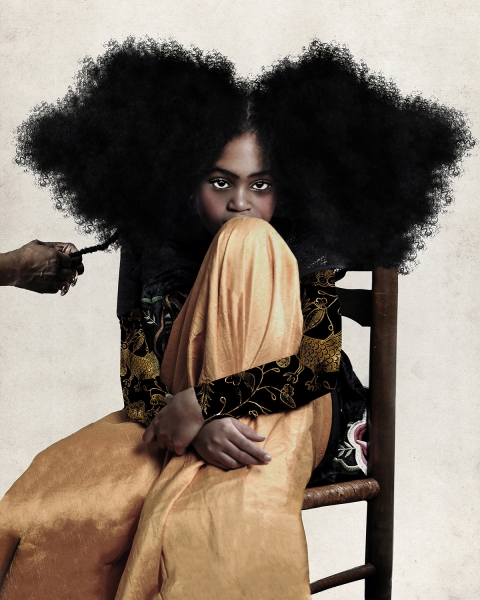
Her father, James, lost his fight with cancer in 2010, a battle Chatmon recorded in a series of photographs. “After my father died, I realized my camera had buffered me from having to witness his decline with my own eyes,” says Chatmon, 39. “It also made me appreciate how powerful my camera really was.”
Her father’s death devastated her, but it also changed the way she viewed her work. “With his passing, something in me died but something else awakened,” she explains. “I realized that I couldn’t go back to my career as a commercial photographer, taking pictures of things that didn’t have a deep meaning for me. I’d come to see my camera as a way to communicate such pain, passion, frustration, and joy.”
She began declining commercial assignments and taking only work that was personal to her. Friends thought the idea of turning down paying work was crazy. “I didn’t have anything against commercial work, but using photography solely to make money no longer resonated with me. After photographing my father's battle, I began to slowly focus more on projects that meant something to me while still sporadically taking some commercial work and eventually focusing only on my personal projects.”
Eventually she elected to break decisively from her past photography and concentrate on personal work. “One day I gathered a ton of tear sheets from magazines that featured my photography and laid them out on a table here in my studio. Then I took a big paintbrush and began painting all over them.” She laughs as she remembers feverishly blotting out, literally, so much of her work. It was cathartic as well as a turning point. “I was so frustrated, and painting over all those images helped me relieve a lot of that frustration.”
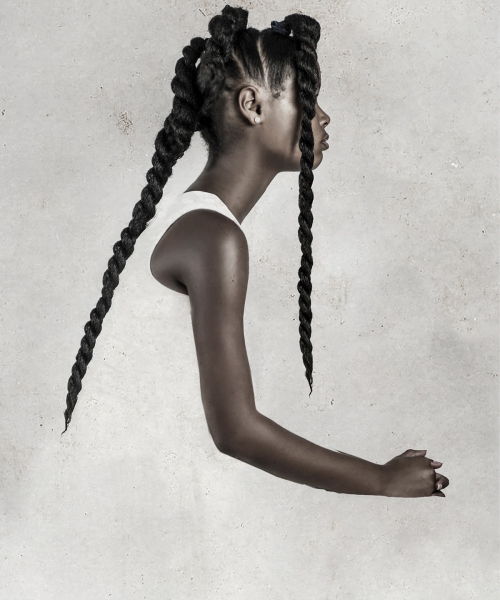
Chatmon began focusing more on personal work. Although she took occasional assignments, she sometimes repurposed images from these jobs and enhanced them via Photoshop. She also began photographing her children, using them as starting points for her personal work, and then adding layers—collage, gold leaf, paint. “I didn’t share this early personal work with anyone,” she says. “I wanted it to stay private.”
Sometimes events influenced her work. “The Trayvon Martin case in 2012 deeply affected me,” she explains. “I thought of my own son and my nephews—young black boys—and how something like that could possibly happen to them. It really built up frustration within me.”
She was beginning to experiment with both her process and her message. She recounts visiting a portrait museum with her children: “We walked through the entire museum and hardly saw any black faces like our own in these portraits. Something was missing. I wanted to correct that. I wanted to shift or re-imagine that narrative.”
Driven to make changes, Chatmon began producing a series of photographs of young black girls to assert the beauty of people of color, which was historically hidden. The intent was to celebrate beauty, she notes, not to validate it: “I don’t think we needed to necessarily be shown that we are beautiful.” Many of the portraits featured models with natural hairstyles. “It saddened and enraged me that beautiful little girls were being sent home from school because of their hair.”
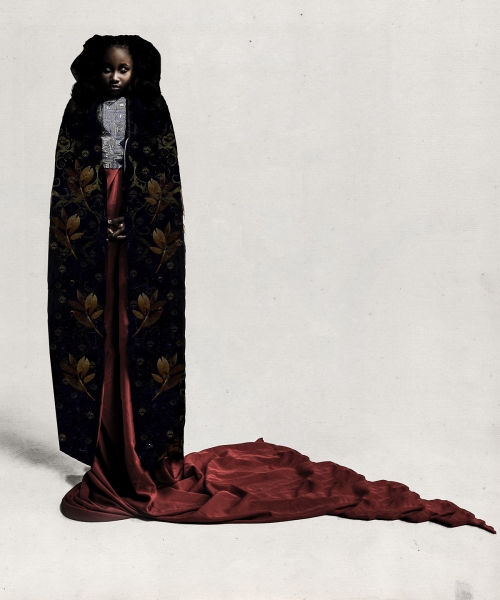
She also experimented with layering patterns, textures, digital illustration, and painting onto her photographs. “After I finish a portrait session I begin manipulating the photograph until I get the effect I want,” she says. These transformed images are also a way of separating new work from her earlier commercial photography. “Photography is still the first layer of my communication,” says Chatmon. “But there are more and more layers.” Indeed, she now refers to herself as both a photographer and a photography-based artist and to her work as “photography as art.”
In addition to experimenting with her process, she began sharing her art via Instagram and contests. “I’d been reluctant in the past to send out my personal work,” she confesses. The feedback was instantaneous and powerful. “I heard from so many people, especially black people saying things like, This is who we are, This is what we look like. The huge response was a big affirmation for me. Finally I felt the work I was doing meant something to both me and people out there. I felt as though I had made the right decision to begin focusing on the messages I wanted to leave behind.”
She pauses and blinks back a tear when she recalls a message from a young black girl who said she was thinking of relaxing her hair instead of leaving it natural. “But my pictures helped her change her mind,” says Chatmon. “And there were the mothers who told me their daughters had been bullied about their hair or their skin tone and how much they loved my images.”
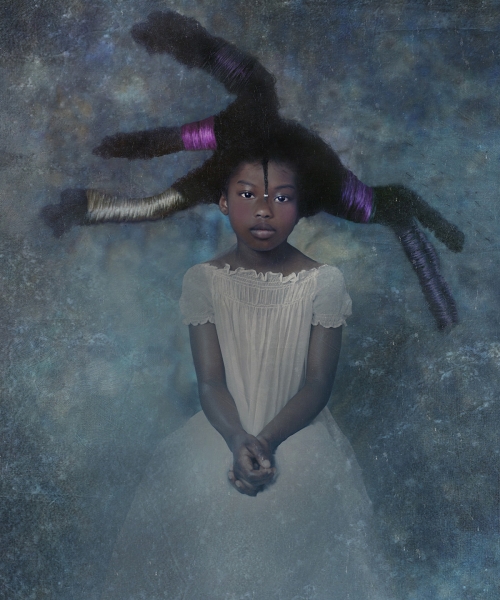
Chatmon was recently named IPA Photographer of the Year by the International Photography Awards for images from her latest series, “Awakening.” Her new multi-media images have been selling internationally via Saatchi Art online and at Baltimore’s Galerie Myrtis.
“Tawny’s work crosses all boundaries,” says Myrtis Bedolla, owner of Galerie Myrtis. “I am continually amazed how her work resonates with people as disparate as Europeans, Asians, and Westerners. It speaks to so many people on such an emotional level. That’s the sign of a true artist.”
While Chatmon confesses she is awed by the recognition she’s recently received, she’s quick to admit that her artistic journey is just beginning. “I’m constantly experimenting,” she explains. She just finished a portrait that began with a studio portrait she made of her 11-year-old daughter, Kailynn-James (a frequent model). She’s added layer upon layer to the original portrait, which she made nine months ago, manipulating it in Photoshop, changing her hair, painting on the print, adding texture via collage and montage, using a 24-carat gold leaf appliqué, and finally deeming it complete after one last change.
Before she explains the image’s finishing touch, she reminds me of something she thought of when her father passed away almost a decade ago: “You know they say a person dies twice. The first time is when he or she leaves this Earth. The second time is when there is no one left here who remembers them.”
She continues: “No one would know this but I’ve used Photoshop to replace my daughter’s eyes with my father’s, from a picture I took of him as he was going to one of his final cancer treatments. But I know it. And I know my father will never be forgotten.”
RELATED: Tawny Chapman chronicles her father
Robert Kiener is a writer in Vermont.

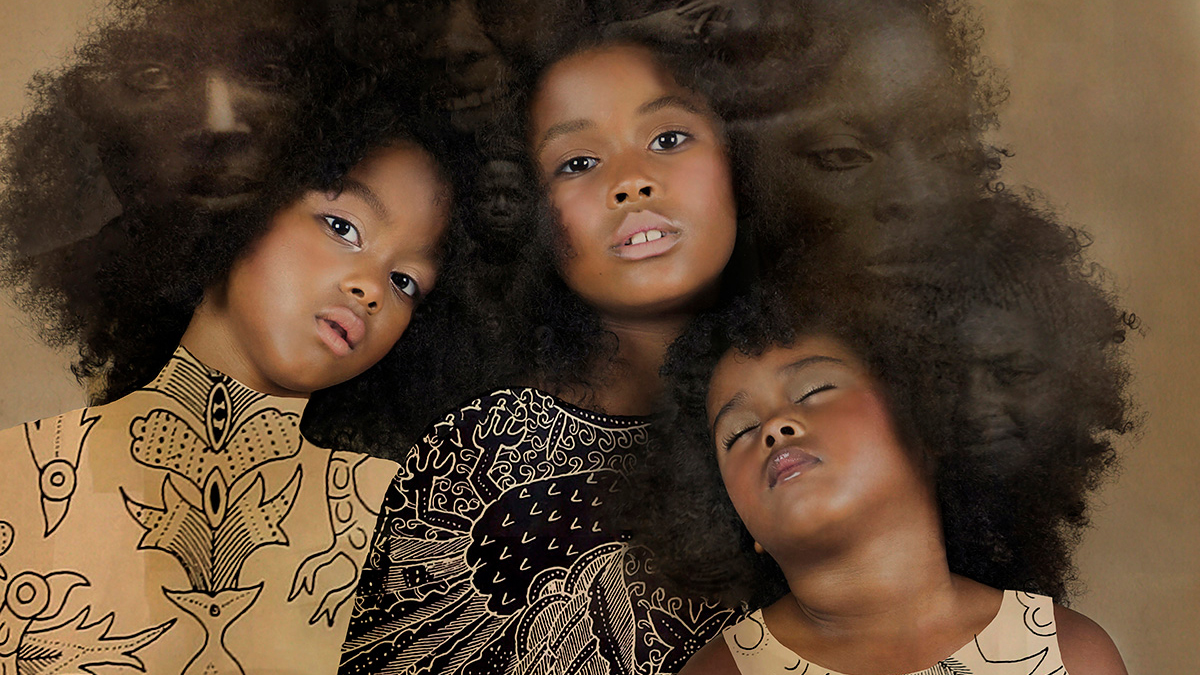
 View Gallery
View Gallery


